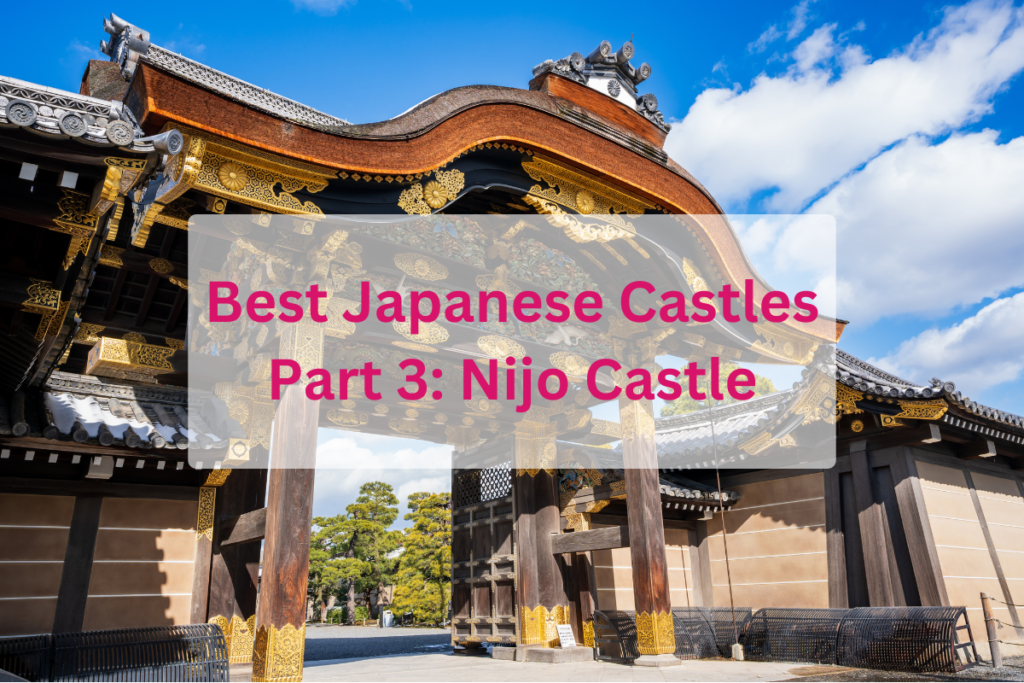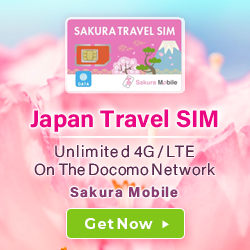Welcome back to our Best Japanese Castles Series! As we introduced Best Japanese Castles Series Part 2: Himeji Castle before, we will introduce Nijo Castle in Kyoto this time!
Nijo Castle was built in 1603 and designated a UNESCO World Heritage Site in 1994. If you visit Nijo Castle, you can truly experience the history of the Edo period.
In Part 3, we will introduce several recommended spots in Nijo-Castle. You will be intrigued by Nijo-jo’s history and beauty, so let’s explore the fascinating details of Nijo Castle and find out everything you need to know about this fantastic Japanese castle 😊

Best Japanese Castles Series
Part 3: Nijo Castle
Table of Contents
1. Nijo Castle Visiting Information
- Opening hours: 8:45 AM – 4:00 PM (closing time 5:00 PM)
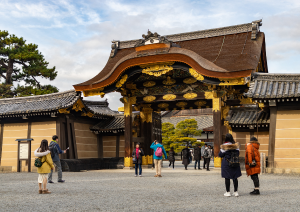
- Admission fee: Adults: 1,300 yen, Junior High & High School Students: 1,100 yen. (including the Ninomaru Palace)
- Access: Transfer from JR Kyoto Station to the Karasuma Line subway at [Karasuma Oike Station] and get off at [Nijojo-mae Station] on the Tozai Line. A short walk from there.
- Audio guide: English, Chinese, Korean, French, Spanish, and German are available. Recording time is an hour. (600 yen)
- Visit the official site: https://nijo-jocastle.city.kyoto.lg.jp/?lang=en
2. Inside Nijo Castle Grounds
1. 唐門(Kara-mon)
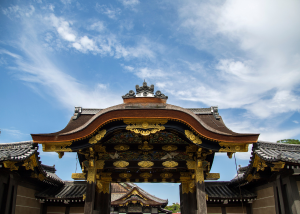
This is the main gate of the Ninomaru Palace. The roof is constructed in the kirizuma style (gable structure), with karahafu gables (Japanese style architecture) at the front and back. The transom of the gables is adorned with colorful carvings. These carvings depict auspicious symbols such as pine, bamboo, plum trees, cranes, dragons, tigers, and phoenixes. You can see those specific symbols near the gate!
2. 二の丸庭園(Ninomaru Garden)
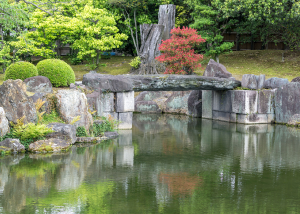
The garden, believed to have been created during the construction of Nijo Castle, is designed in the shoin-zukuri style (a drawing room) and is considered a masterpiece of Kobori Enshu (a Japanese garden designer). Horai Island is in the center of the pond, with Turtle and Crane Islands on either side. Horai Island is said to be the dwelling place of immortals, while the crane and turtle symbolize longevity. Enjoy the peaceful and serene atmosphere of Japanese gardens, which provide a perfect setting for relaxation.
3. 二の丸御殿(Ninomaru-Goten)
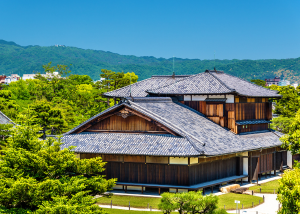
Ninomaru Palace of Nijo Castle, a representative building of the shoin-zukuri style from the Edo period, is designated as a National Treasure since it is the only remaining palace complex. It is a precious historical relic.
The palace comprises 33 rooms, with an interior space of over 800 tatami mats. The entrance porch, called the carport, features carvings of pines and peonies and the mythical bird called rancho under the roof. Additionally, the corridors of Ninomaru Palace are built with “nightingale floors” (uguisubari), which make chirping sounds when walked on, making it easier to notice visitors or intruders. You can walk on the “nightingale floors” and hear the noise!
4. 和楽庵茶房(Warakuan chabou) Japanese Tea House
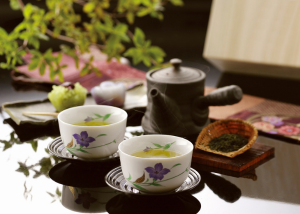
Waraku-an” is a historically valuable building created from part of the former Sumitomo family residence located northeast of the current Kyoto City Hall and its garden stones. In front of it stretches “Seiryu-en,” a garden blending Japanese and Western styles.
At the tearoom “Waraku-an,” Sabou Maeda offers matcha and sencha sets. Please stop by and take a rest in this historically significant space during your visit to Nijo Castle!
5. Carp Feeding
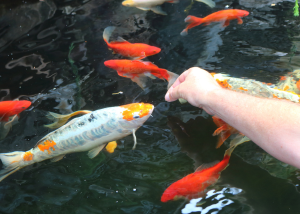 Carp food is sold at the Honmaru East Bridge (200 yen).
Carp food is sold at the Honmaru East Bridge (200 yen).
In Japan, koi carp are important in Japanese culture because they are lucky symbols. They are considered emblems of fortitude, tenacity, and good fortune, so they are said to bring luck to the gardens and castles in Japan. Many kinds of colors add to the beauty and tranquility of the castle gardens and moats.
Enjoy feeding the gracefully swimming carp in the inner moat while savoring the castle’s atmosphere.
Don’t Forget the SIM card!!! 
Get our Sakura Mobile SIM card to make it easy for you to post beautiful scenes like Nijo Castle and Japanese green tea house on social media!
You can also research a lot of information, such as maps and train schedules, without worrying about data traffic 🙂
Get a SIM card or Pocket WiFi to make traveling easier!
3. Why is Nijo-jo so famous and important?
-
World Heritage Site
Nijo Castle has been registered as a component of the “Historic Monuments of Ancient Kyoto.” The key points are that it preserves numerous splendid remnants of the Momoyama culture, such as the Ninomaru Palace and the Karamon Gate, and it is a valuable historical heritage that has witnessed the rise and fall of the Tokugawa family as well as Japan’s long history.

-
Historical Significance
Nijo Castle is a key historical site in Japan, having been built in 1603 as the residence of Tokugawa Ieyasu, the first shogun of the Tokugawa Shogunate. It has witnessed significant historical events, including the meeting of the last shogun, Tokugawa Yoshinobu, with Emperor Meiji, marking the end of the shogunate and the beginning of the Meiji Restoration. You can see the room where Tokugawa Yoshinobu returned their power to the emperor in the Ninomarugoden. This will make you feel the historical changes of the period.
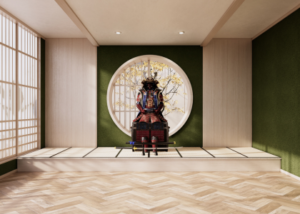
4. Conclusion
I hope you learned a lot about Nijo Castle! As I mentioned above, the Ninomaru-honden has many beautiful gates, Japanese gardens, golden wall pictures, and sculptures. You can also try the traditional Japanese green tee at the 和楽庵茶房(Warakuan chabou) green tee room while enjoying the tranquil Japanese view.
Kyoto was the capital of Japan over 1,000 years ago, so there are many tourist spots such as 金閣寺(Kinkakuji-temple), 伏見稲荷大社(Hushimi-inari-disha), and 清水寺(Kiyomizu-temple). So, I hope you have a wonderful trip in Japan 🙂 Thank you for reading our Japanese Castle Series!
Get a SIM card or Pocket WiFi to make traveling easier!
As we mentioned before, having internet data can be helpful when planning your day, contacting your friends, and idling away time. If you need a SIM card or a pocket WiFi, we recommend Sakura Mobile! We offer excellent services such as delivery to your hotels, unlimited data options, full English support, and more! In addition, you can pick up your SIM card or pocket WiFi directly upon arriving at our counter at Kansai International Airport.
・Unlimited data options for SIM cards
・Portable Wi-Fi you can easily return
・Full English support
・Stable internet network
By reserving online before departing, you can
-
-
-
-
-
-
-
- Lower your rental fees
- Avoid stock shortages at the airport
- Start your trip with internet data
-
-
-
-
-
-
To learn more about data and WiFi options for your trip, check out our products below.
↑ Go back to the table of contents
CUSTOMER’S VOICE
↑ Go back to the table of contents

